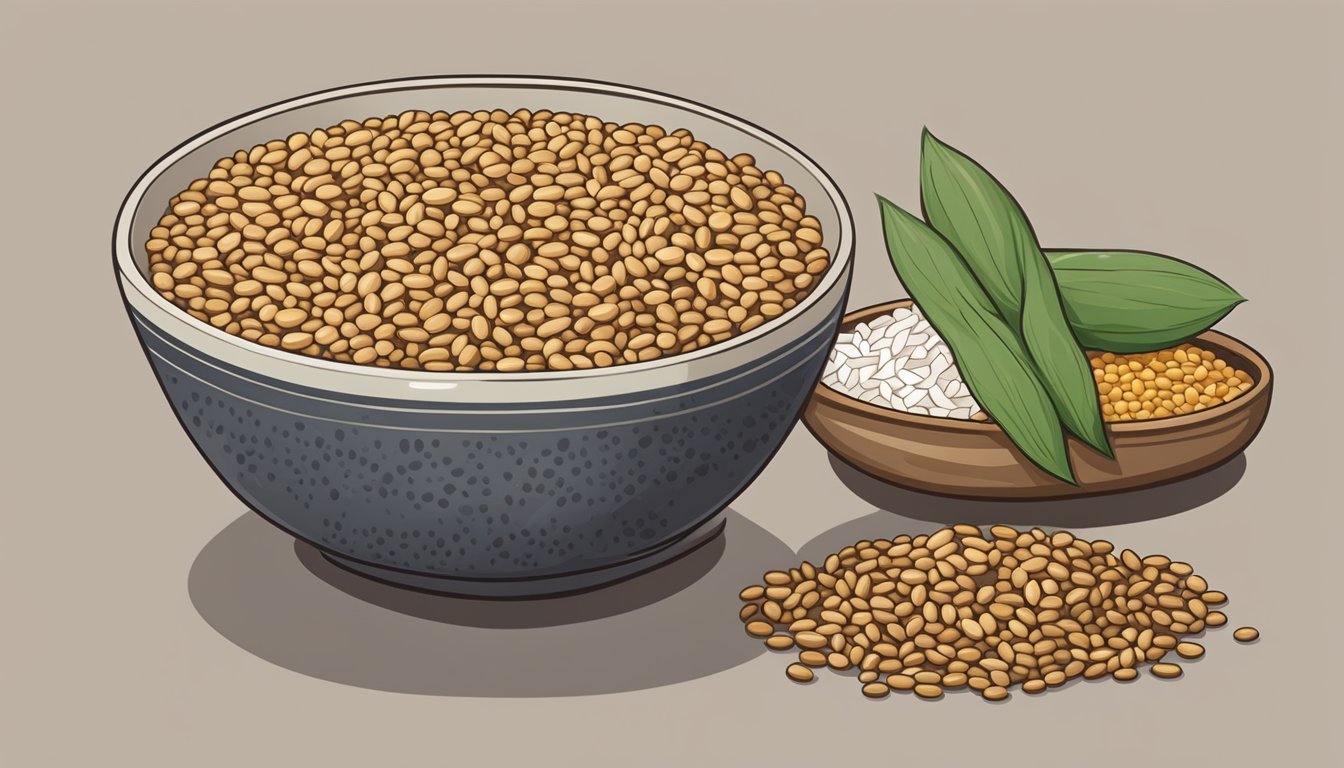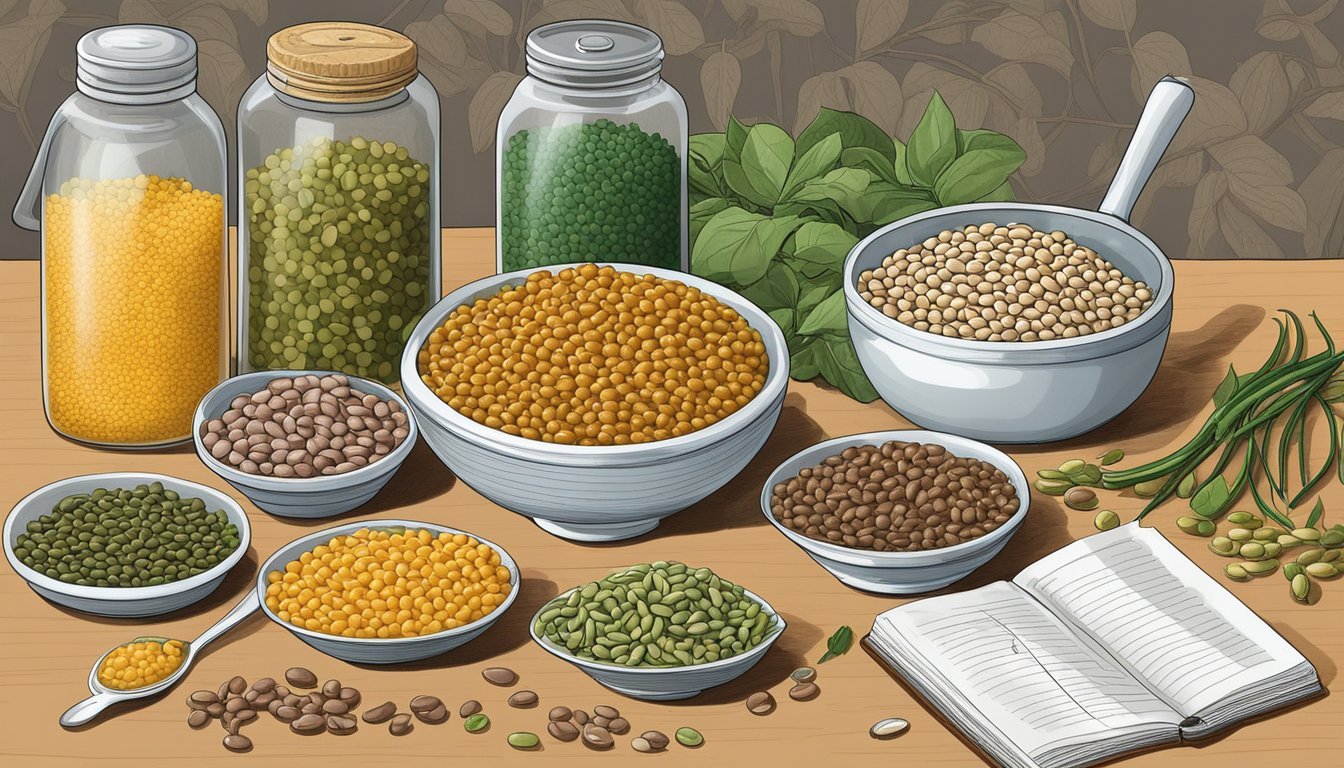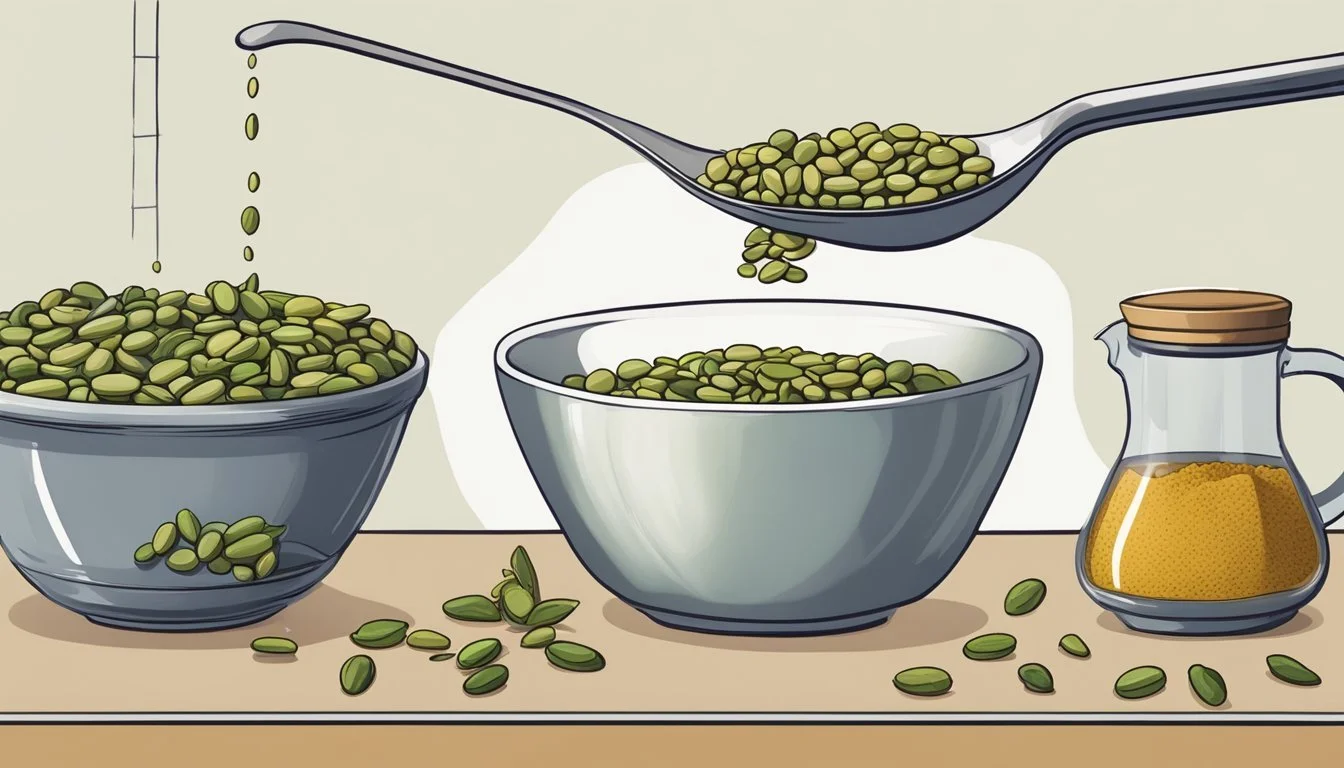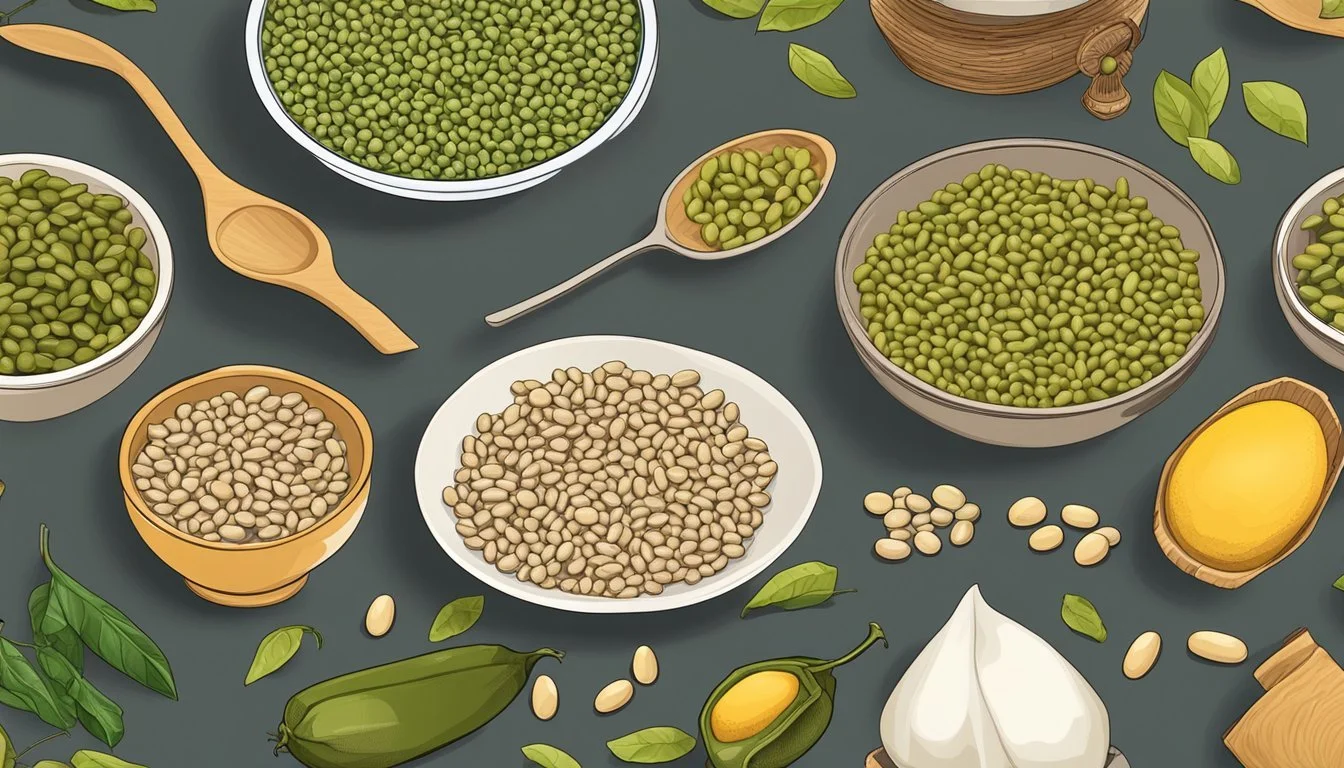Moth Beans Substitutes
Best Alternatives for Cooking and Nutrition
For those exploring the culinary versatility of moth beans, finding suitable substitutes is essential for maintaining the nutritional balance in your recipes. Moth beans are rich in protein, fiber, and essential vitamins and minerals such as calcium, potassium, phosphorus, and iron. A great substitute for moth beans is the tepary bean, which is also high in protein and fiber, making it a valuable addition to soups, stews, and salads.
Another excellent alternative is the Turkish gram, known for its nutty flavor and impressive nutritional profile. This legume offers a substantial amount of protein and is lower in carbohydrates, rendering it ideal for those seeking a nutritious yet flavor-rich option. Whether making traditional Indian dishes or incorporating them into new recipes, these substitutes ensure that meals remain wholesome and delicious.
Exploring these substitutes ensures that you do not compromise on the nutrients moth beans provide. With options like navy beans and urad dal also serving as suitable replacements, anyone can find a legume that fits their dietary needs and culinary preferences seamlessly.
Understanding Moth Beans
Moth beans, known scientifically as Vigna aconitifolia, are a highly nutritious legume. They are valued for their protein content and are integral to various Indian dishes, particularly in regions with arid climates.
Origins and Cultivation
Moth beans are native to India, predominantly grown in states like Maharashtra. They thrive in arid and semi-arid regions due to their resilience to drought and soil erosion. Optimal growth occurs in well-drained sandy loam soils with moderate rainfall. The plant is also known for improving soil fertility by fixing nitrogen, which benefits subsequent crops.
Nutritional Profile
Moth beans are rich in protein, making them a valuable food source for vegetarian diets. Nutritional highlights per 100 grams of dried beans include:
Proteins: 22.9 grams
Magnesium: 104 mg
Iron: Significant daily value contribution
They also provide essential vitamins and minerals like folate, copper, and various B vitamins. The caloric content supports energy needs while maintaining a low-fat profile.
Culinary Uses
Moth beans are versatile in Indian cuisine, featured in traditional dishes like stews, curries, and salads. They can be cooked and sprouted, enhancing their nutritional value. In their ground form, as moth flour, they serve as a gluten-free alternative to wheat flour, used to make rotis, parathas, and puris. The beans' earthy flavor complements various spices and ingredients, making them a staple in many households.
Culinary Substitutes for Moth Beans
There are several effective alternatives to moth beans that cater to different culinary needs. Depending on what you're looking for—accessibility, nutritional content, or flavor—each substitute brings its unique qualities to your recipes.
Accessible Alternatives
One of the most straightforward substitutes for moth beans is mung beans. They are readily available and can be used in similar dishes like stews and salads.
Lentils are another accessible option. They come in various types, such as red, green, and brown lentils, offering versatility in cooking. Lentils cook faster than moth beans and don’t require pre-soaking, making them a convenient choice for quick meals.
Black beans can also be a great substitute. Easily found in most grocery stores, they work well in soups, salads, and even as a base for veggie burgers. For recipes requiring whole beans, canned black beans save time, eliminating the need for soaking and cooking.
Nutritionally Comparable Legumes
For those seeking a nutritional match, adzuki beans offer a similar protein content to moth beans. They contain about 7-8 grams of protein per serving and can be used in various dishes ranging from stews to sweets.
Chickpeas also provide a robust nutritional profile, rich in protein and fiber. They fit well in salads, curries, and even roasted as snacks. Chickpeas can be used directly from the can or soaked and cooked if using dried beans.
Pinto beans are another nutritionally sound choice. They are high in fiber and offer a similar texture to cooked moth beans. Pinto beans work excellently in soups, stews, and burrito fillings, making them a versatile substitute.
Texture and Flavor Matches
When it comes to matching texture and flavor, cannellini beans stand out. They have a creamy texture and mild flavor, suitable for soups and stews, providing a similar mouthfeel to moth beans.
Navy beans are small, white beans that retain their shape well and offer a neutral flavor. They're a perfect addition to bean salads or baked bean recipes.
Kidney beans provide a firmer texture and a slightly sweet taste, akin to moth beans. They're often used in chili, making them a great alternative for hearty dishes. They need to be cooked thoroughly to ensure a tender texture.
Using these substitutes can help replicate the characteristics of moth beans in various recipes, maintaining the integrity of the dish while providing different nutritional benefits and textures.
Preparing Substitutes in Recipes
When using substitutes for moth beans in recipes, adjustments may be necessary for cooking times and seasoning profiles. This ensures that the dishes maintain their intended flavors and textures.
Adjustments for Cooking Times
Different beans and legumes have varying cooking times. For instance, lentils cook faster than beans.
Sprouted beans, like sprouted kidney beans, may require less cooking time compared to their dried counterparts. Boiled beans, like black beans or pinto beans, usually take about 45 minutes to an hour. It is essential to adjust boiling time based on the size and type of the substitute used.
Frying beans in oil with spices often requires less time due to the smaller quantity and higher heat. Monitor the beans closely while cooking to prevent overcooking. Always check for doneness before incorporating into the recipe.
Seasoning Variations
Seasoning plays a crucial role in the flavor profile of the dish. Using substitutes may require slight changes in the spices used.
For instance, if substituting with black beans, adding cumin seeds, turmeric powder, and garam masala can enhance flavor. When substituting with butter beans, consider incorporating hing (asafoetida) and fresh ginger to balance the richness of the beans.
The inclusion of onions, tomatoes, and fresh coriander leaves can add freshness to the dish. Adjust the quantity of salt depending on the type of bean used, as some beans can absorb more seasoning than others.
Suggested Recipe Adaptations
Recipes can be precisely adapted to use substitutes by making small adjustments. For stews and soups, substituting pinto beans for moth beans works well due to similar textures.
In stir-fries, substituting navy beans requires a tweak in cooking time, keeping an eye on their softer texture. For curries, using chickpeas as a substitute might need extra water and a bit more cooking time to integrate flavors.
When incorporating spices, begin with the basic mix mentioned above and adjust according to taste preferences. The final touch, adding fresh coriander leaves, enhances the dish both visually and in flavor. Use these tips to achieve the best results in your recipes.
Health Benefits and Considerations
Moth beans provide a diverse range of nutritional benefits, such as high protein content and essential vitamins and minerals. They can significantly contribute to a balanced diet but may not be suitable for everyone due to specific dietary concerns.
Comparative Nutritional Advantages
Moth beans are rich in protein, with dried beans containing 22.9 grams of protein per 100 grams. When cooked, a 177-gram cup offers about 13.8 grams. This makes them an excellent protein source, particularly for vegetarians and vegans.
In addition to protein, moth beans are abundant in minerals such as iron, magnesium, manganese, and zinc. They also contain a substantial amount of fiber, which aids in digestion and relieving constipation. Vitamins found in moth beans include various B vitamins and folate, which are crucial for metabolic processes and DNA synthesis.
Dietary Implications and Restrictions
Individuals with kidney issues should note that moth beans have high levels of potassium and phosphorus, which might need moderation. Those needing to monitor their sodium intake will find moth beans a beneficial option as they are naturally low in sodium.
However, people with specific legume allergies or those experiencing gastrointestinal sensitivities should be cautious. The high fiber content, while generally beneficial, could exacerbate conditions like irritable bowel syndrome (IBS) in some individuals.
Sodium, amino acids, and various micronutrients play significant roles in overall health, and thus incorporating moth beans can help in managing conditions like blood pressure and osteoporosis by providing a nutritious profile that supports bone health and cardiovascular stability.
Moth Beans in Global Cuisines
Moth beans, known for their adaptability in various recipes, hold a significant place in both traditional Indian dishes and international culinary adaptations. Their versatility makes them a valuable ingredient in a range of cuisines around the world.
Indian Traditional Dishes
In India, moth beans are a staple, especially in arid regions. They are often used in dal, a lentil soup essential to Indian cuisine. Moth beans are also a key ingredient in misal pav, a spicy curry favorite in Maharashtra.
They frequently appear in roti and paratha fillings, providing a protein boost. Moth bean sprouts are commonly used in salads, lending a crunchy texture and nutritional value. Rajasthani cuisine features moth beans in panchmel dal, a blend of five legumes.
Incorporation in International Recipes
Moth beans are increasingly popular in the United States and Australia as a high-protein substitute in various recipes. They are often found in soups and stews, where their texture mimics more common legumes.
In Thailand, moth beans can be found in some traditional salads, adding a new dimension to these dishes. Health-conscious chefs incorporate moth beans into gluten-free recipes, using moth flour for bread and pastries. International vegetarian dishes frequently feature these beans, celebrated for their nutritional benefits and adaptability in diverse culinary traditions.
Alternative Uses of Moth Beans
Moth beans, also known as mat beans, have versatile applications beyond traditional culinary uses. These include non-food crops and innovative culinary creations that make the most of this legume's unique properties.
As a Non-Food Crop
Moth beans are valuable as a non-food crop in agricultural practices. Known for their drought-resistant properties, they thrive in arid regions where water availability is limited. Farmers often use them as forage to feed livestock, especially during dry seasons.
Additionally, planting moth beans improves soil fertility due to their nitrogen-fixing capabilities. This characteristic helps to replenish nutrients in the soil, benefiting subsequent crops. Moth beans' vines and pods also add organic matter when plowed back into the soil, enhancing its quality.
Innovative Culinary Creations
Innovative culinary uses of moth beans are growing in popularity. Cooks worldwide incorporate moth bean flour to create gluten-free baked goods like roti, parathas, and puris. Its high protein content makes it an excellent substitute for wheat flour in many recipes.
Other applications include using sprouts from moth beans in salads and sandwiches. These sprouts offer a crunchy texture and nutritious addition to various dishes. In Indian cuisine, moth beans are often utilized to prepare savory snacks, soups, and stews, showcasing their versatility as a vegetable and legume.
Combining traditional techniques and modern food innovations, moth beans serve various culinary purposes, bringing diversity to the kitchen.








